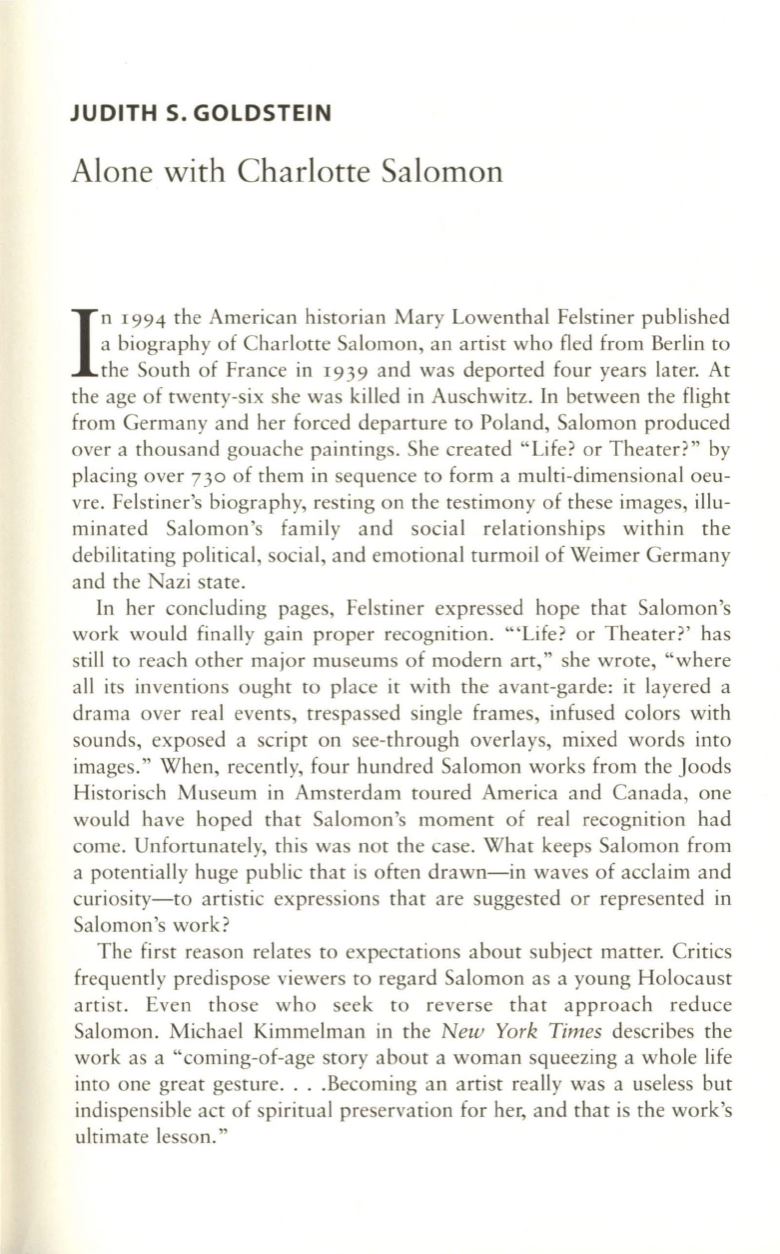
JUDITH S. GOLDSTEIN
Alone with Charlotte Salomon
I
n
1994
the American historian Mary Lowenthal Felstiner published
a biography of Charlotte Salomon, an artist who fled from Berlin to
the South of France in
1939
and was deported four years later. At
the age of twenty-six she was killed in Auschwitz. In between the flight
from Germany and her forced departure to Poland, Salomon produced
over a thousand gouache paintings. She created "Life? or Theater?" by
placing over
730
of them in sequence to form a multi-dimensional oeu–
vre. Felstiner's biography, resting on the testimony of these images, illu–
minated Salomon's family and social relationships within the
debilitating political, social, and emotional turmoil of Weimer Germany
and the azi state.
In her concluding pages, Felstiner expressed hope that Salomon's
work would finally gain proper recognition . '''Life? or Theater?' has
still to reach other major museums of modern art," she wrote, "where
all its inventions ought to place it with the avant-garde: it layered a
drama over real events, trespassed single frames, infused colors with
sounds, exposed a script on see-through overlays, mixed words into
images." When, recen tl y, four hundred Salomon works from the Joods
Historisch Museum in Amsterdam toured America and Canada, one
would have hoped that Salomon's moment of real recognition had
come. Unfortunately, this was not the case. What keeps Salomon from
a potentially huge public that is often drawn-in waves of acclaim and
curiosity-to artistic expressions that are suggested or represented in
Salomon's work?
The first reason relates to expectations about subject matter. Critics
frequently predispose viewers to regard Salomon as a young Holocaust
artist. Even t hose who seek to reverse that approach reduce
Salomon. Michae l Kimmelman in the
New York Times
describes the
work as a "coming-of-age story about a woman squeezing a who le life
into one great gesture. . . .Becoming an artist really was a useless bu t
indispensible act of spiritual preservation for her, and that is the work's
ultimate lesson."


